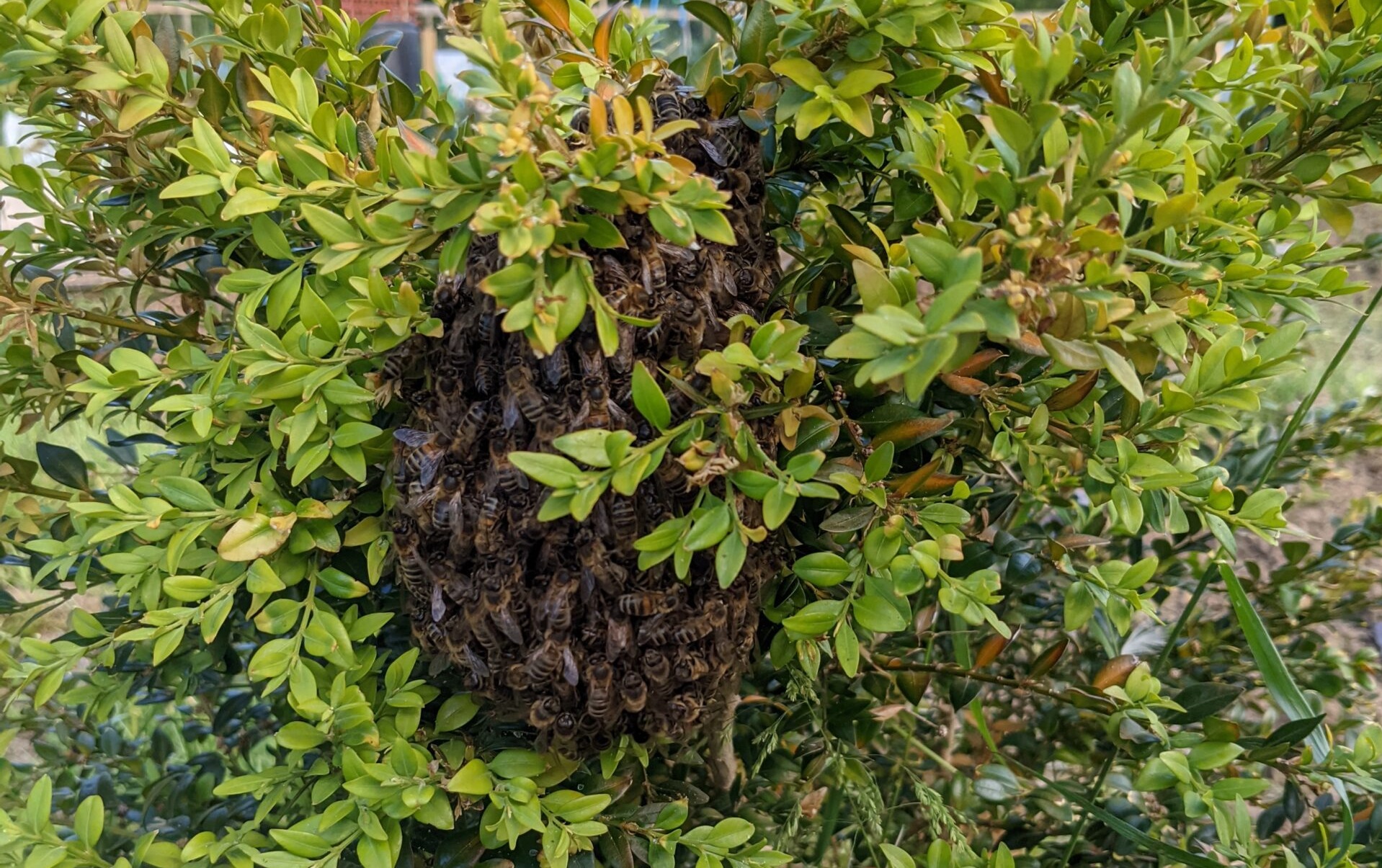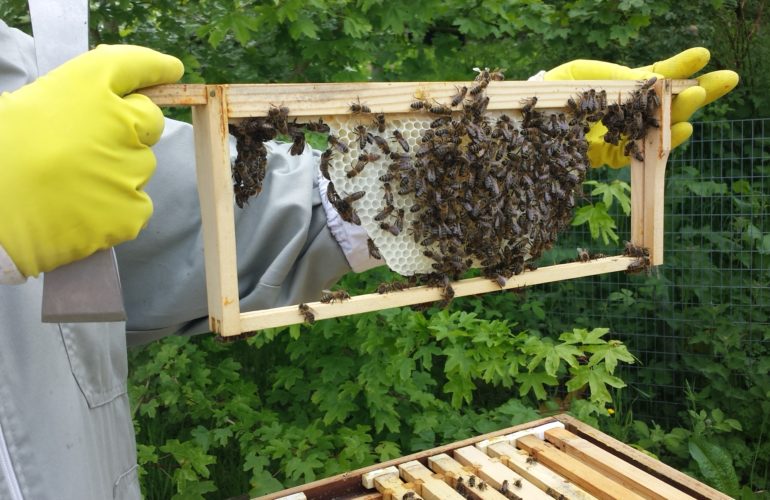Swarming is the natural means of reproduction of honey bee colonies. A new honey bee colony is formed when the queen bee leaves the colony with a large group of worker bees, a process called swarming.
In the prime swarm, about 60% of the worker bees leave the original hive location with the old queen. This swarm can contain thousands to tens of thousands of bees. Swarming is mainly a spring phenomenon, usually within a two- or three-week period depending on the locale, but occasional swarms can happen throughout the producing season.
If you encounter a swarm of honeybees in a public place or one settles on your property, please in the first instance try to confirm that it is indeed a honeybee swarm by looking at the guide on the British Beekeepers Association website. Once you have confirmed it is a swarm of honey bees please contact our swarm coordinator on secretary@lancaster-beekeepers.org.uk or complete the Contact us link on this site.
- If you see a swarm, remember it’s a good thing, but do not interfere with it yourself.
- If you are in the Lancaster/Lune valley area email our swarm coordinators in Lancaster at secretary@lancaster-beekeepers.org.uk.
- They will advise you and organise a local beekeeper to deal with the problem if appropriate.
Outside this area
- Visit the British Beekeepers Association Website for useful information about swarms, how to identify the type of bee you have and to find your local swarm coordinator.
- Or alternatively, contact the local council or police station.




